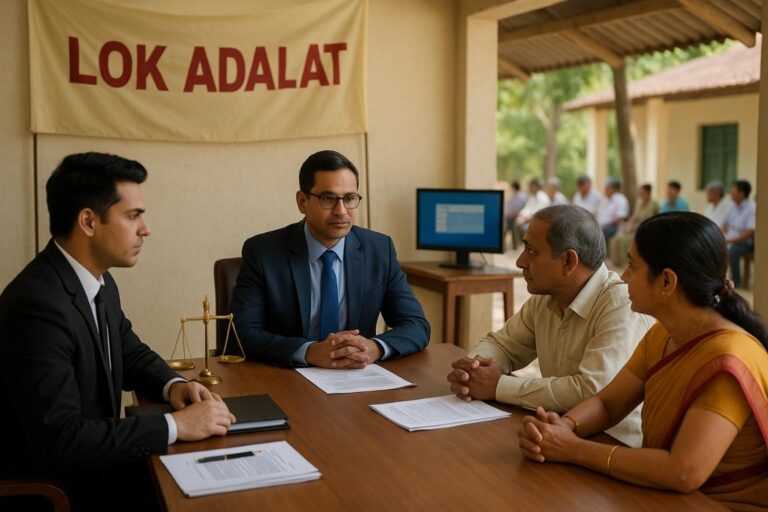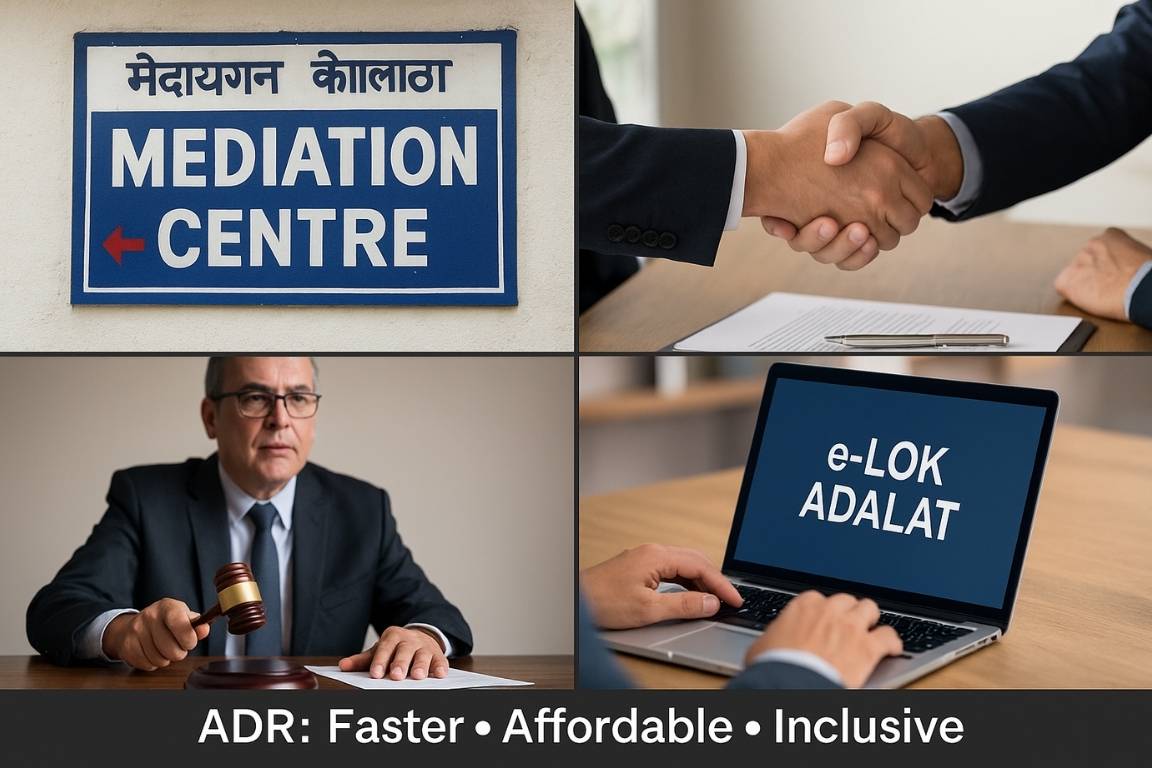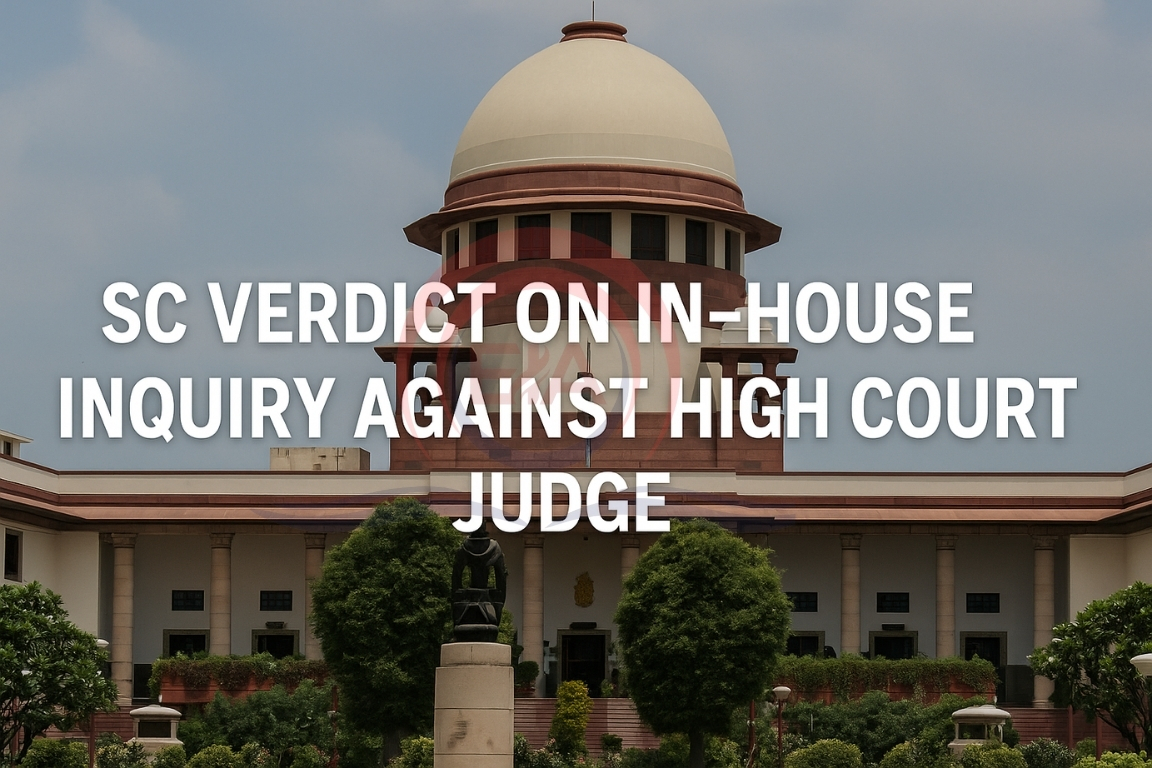The Law Minister recently emphasized strengthening Alternative Dispute Resolution (ADR) to address India’s judicial delays and ensure faster, affordable justice.
India’s Judicial System
- As per the National Judicial Data Grid (NJDG): 4.57 crore total pending cases. 81,768 in Supreme Court; 62.9 lakh in High Courts.
- Vacancy rates: 33% in High Courts, 21% in District Courts.
- Uttar Pradesh, Andhra Pradesh, Bihar among states with highest backlog.
- Many cases have been pending for over 10 years, demanding alternative mechanisms.

What is ADR?
Alternative Dispute Resolution refers to non-judicial methods of settling disputes through:
- Arbitration – Binding decision by a neutral arbitrator.
- Conciliation – Informal settlement with help of a conciliator.
- Mediation – Voluntary negotiation with a neutral mediator.
- Lok Adalat – People’s court for amicable pre-litigation settlement.
These methods aim for speed, affordability, and mutual agreement without lengthy court trials.
Legal and Constitutional Support
- Article 39A: Mandates equal justice and free legal aid.
- Section 89, CPC (1908): Recognizes ADR processes in civil disputes.
- Arbitration and Conciliation Act, 1996 (amended 2021): Sets 180-day limit for resolution and Provides for Indian Arbitration Council.
- Legal Services Authorities Act, 1987: Governs Lok Adalats.
How ADR Reduces Court Delays
- Pre-litigation mediation prevents disputes from reaching courts.
- Lok Adalat decisions are final, reducing appeals.
- Low cost and informal setting promote quick settlements.
- Social inclusion: Solutions in local language, respecting emotions.
Functioning of Lok Adalats
- First Lok Adalat: Gujarat, 1999.
- Include National Lok Adalats, Permanent Lok Adalats, and e-Lok Adalats.
- Decisions are binding with no appeal, but dissatisfied parties may approach regular courts.
Way Forward
- Enhance public awareness about ADR benefits.
- Expand mediation centres and digital platforms.
- Encourage pre-litigation settlement in civil and commercial cases.
- Improve infrastructure and training for mediators and arbitrators.
Conclusion
ADR embodies India’s ancient Panchayat tradition of consensus-based justice. Strengthening ADR can reduce pendency, enhance access to justice, and align dispute resolution with constitutional values of equality and fairness.





